Project Year
2009
Region(s)
South Asia
Country(ies)
Sri Lanka
Project Description
This project involves the administration of a survey in Sri Lanka. The objectives of the study are to ascertain how poor people in Sri Lanka spend, save and store their money; how the introduction of mobile banking might alter these practices; how people perceive modern technology-based banking; the potential for the expansion of communications technology to benefit the poorest people; and policy actions needed to enhance financial inclusion. The research involves a survey instrument and an experienced co-researcher who will rely on an established network of enumerators trained by the government’s Department of Census and Statistics. The case at hand is Sri Lanka, an island country in the Indian Ocean characterized by a large rural population, a significant portion of whom live on plantation estates. Mobile telephone penetration is 38% and Rural Community Information Centers have been initiated by the government to try to bring information and communications technologies to villages throughout the country.
Researcher(s)
Sirimevan S.S. Colombage
About the Researcher(s)
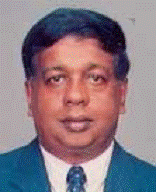
Synopsis of Research Results
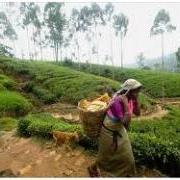 Sri Lanka being predominantly a rural economy, around four fifths of the poor lives
in rural areas. Lack of access to basic necessities such as safe drinking water, food,
clothing, shelter and educational attainment is a major barrier to socioeconomic upliftment
of the communities in these villages. Poverty is highly concentrated in rural areas
where connectivity to towns and markets. Inaccessibility to financial facilities has
made them more vulnerable. Households with similar characteristics may have different
chances of being poor depending on where they are located. Specifically, a household
located in a remote village is more likely to be poor than a similar household living
in a metropolitan area. Agriculture, which is the main economic activity in these
villages, does not give enough income to the farmers to have a decent meal. The poor
living in these areas are unable to improve their cultivations or off-farm activities
as they do not have access to formal financial institutions. They have to travel miles
and miles to reach a nearest bank branch. They are compelled to walk such distances,
as regular public transport is not available in most instances. Even when they go
to banks spending several hours on the road, they have to spend some more time in
the banks to get the transactions done. They may also be shabbily treated by bank
officers. Filling of application forms and furnishing the documents required by banks
add further burden on them. Loan facilities are not easily accessible due to collateral
and other stringent requirements. Hence, peasants have to borrow money from private
money lenders or village boutiques at very high interest costs. So the rural poor
are practically excluded from the formal financial institutions preventing them from
crossing the poverty line.
Sri Lanka being predominantly a rural economy, around four fifths of the poor lives
in rural areas. Lack of access to basic necessities such as safe drinking water, food,
clothing, shelter and educational attainment is a major barrier to socioeconomic upliftment
of the communities in these villages. Poverty is highly concentrated in rural areas
where connectivity to towns and markets. Inaccessibility to financial facilities has
made them more vulnerable. Households with similar characteristics may have different
chances of being poor depending on where they are located. Specifically, a household
located in a remote village is more likely to be poor than a similar household living
in a metropolitan area. Agriculture, which is the main economic activity in these
villages, does not give enough income to the farmers to have a decent meal. The poor
living in these areas are unable to improve their cultivations or off-farm activities
as they do not have access to formal financial institutions. They have to travel miles
and miles to reach a nearest bank branch. They are compelled to walk such distances,
as regular public transport is not available in most instances. Even when they go
to banks spending several hours on the road, they have to spend some more time in
the banks to get the transactions done. They may also be shabbily treated by bank
officers. Filling of application forms and furnishing the documents required by banks
add further burden on them. Loan facilities are not easily accessible due to collateral
and other stringent requirements. Hence, peasants have to borrow money from private
money lenders or village boutiques at very high interest costs. So the rural poor
are practically excluded from the formal financial institutions preventing them from
crossing the poverty line.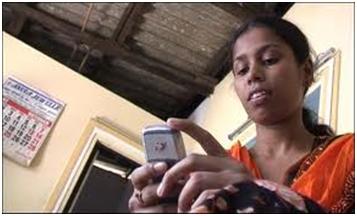 Using mobile money (m-money) systems or mobile banking (m-banking) would be an effective
means to deal with the problem of financial exclusion and thereby empowering the rural
poor. This is proved by the success stories in countries such as Bangladesh, Kenya
and the Philippines. The objective of this study is to examine whether there is potential
to use mobile phones to facilitate financial transactions of the poor living in remote
rural villages in Sri Lanka. Qualitative information for the study was collected through
focus group discussions. Based on these findings, a structured questionnaire was prepared,
and it was used to collect information from 1,000 households in the field from different
districts of the island. Of them, around 850 households responded.
Using mobile money (m-money) systems or mobile banking (m-banking) would be an effective
means to deal with the problem of financial exclusion and thereby empowering the rural
poor. This is proved by the success stories in countries such as Bangladesh, Kenya
and the Philippines. The objective of this study is to examine whether there is potential
to use mobile phones to facilitate financial transactions of the poor living in remote
rural villages in Sri Lanka. Qualitative information for the study was collected through
focus group discussions. Based on these findings, a structured questionnaire was prepared,
and it was used to collect information from 1,000 households in the field from different
districts of the island. Of them, around 850 households responded.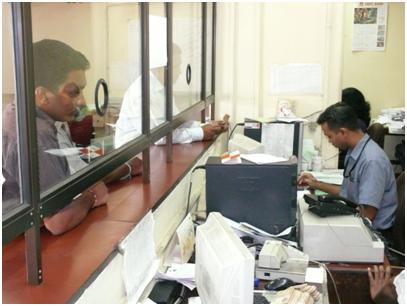 Despite the widespread use of mobile phones, there are hardly any mobile banking operations
in the country. Phone banking accounts for only 0.1 percent of the country’s total
non-cash payments. Traditional bank checks, which account for nearly 90 percent of
non-cash payments in the country, continue to be the dominant instrument. The shares
of internet banking and credit/debit cards are 5 percent and 2 percent, respectively.
According to our survey, 17 percent of the total number of households have some knowledge
about phone banking. Interestingly, 11 percent of the moderate poor and 15 percent
of the ultra poor are also aware of phone banking. But phone banking usage is exclusively
limited to the non-poor. Overall, only about 1 percent of the total number of households
use phone banking. In comparison, 23 percent of the households including the poor
use ATM.
Despite the widespread use of mobile phones, there are hardly any mobile banking operations
in the country. Phone banking accounts for only 0.1 percent of the country’s total
non-cash payments. Traditional bank checks, which account for nearly 90 percent of
non-cash payments in the country, continue to be the dominant instrument. The shares
of internet banking and credit/debit cards are 5 percent and 2 percent, respectively.
According to our survey, 17 percent of the total number of households have some knowledge
about phone banking. Interestingly, 11 percent of the moderate poor and 15 percent
of the ultra poor are also aware of phone banking. But phone banking usage is exclusively
limited to the non-poor. Overall, only about 1 percent of the total number of households
use phone banking. In comparison, 23 percent of the households including the poor
use ATM.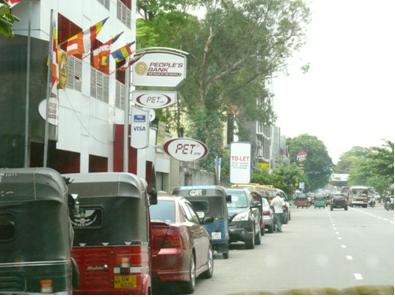 Our focus group discussions reveal that most of the bank customers are unaware of
the mobile banking facilities provided by their banks. A major reason for this could
be that mobile banking is not widely publicized. In Sri Lanka, the mobile phone operators
have not yet launched mobile money systems. As a result of the lack of widespread
use of phone banking, the country has been losing opportunities to use mobile phones
so as to extend financial facilities to the poor who do not have access to formal
finance. Hence, the mobile transactions platform needs to be harnessed in the country
without further delay to overcome the problem of financial exclusion, and thereby
to help the poor to improve their living conditions. An area where there is a possibility
to launch mobile banking is the microfinance industry. There are hundreds of microfinance
institutions operating throughout the country focusing on the poor. Microfinance is
based on a network of small groups in villages consisting of about five members, mostly
women. Most of the members of the groups that we interviewed have mobile phones, but
none of them use mobile banking at present. They, however, expressed willingness to
use mobile banking if available at affordable cost. There is also potential to use
mobile banking among the families of migrant workers working abroad. Their remittances
amount to $ 3.5 billion a year which is about one third of the country’s import bill.
These families receive such foreign exchange from their relatives abroad on a regular
basis through formal and informal channels. Family members living in remote areas,
which do not have easy access to banks, told us during the interviews that they undergo
various difficulties in receiving the money due to long distances to banks and various
formalities. Therefore, they mentioned that it would be convenient for them to use
mobile phones not only to receive money from abroad but also to do the local transactions.
Thus, there is tremendous potential in the country to launch mobile money systems
so as to empower the rural poor.
Our focus group discussions reveal that most of the bank customers are unaware of
the mobile banking facilities provided by their banks. A major reason for this could
be that mobile banking is not widely publicized. In Sri Lanka, the mobile phone operators
have not yet launched mobile money systems. As a result of the lack of widespread
use of phone banking, the country has been losing opportunities to use mobile phones
so as to extend financial facilities to the poor who do not have access to formal
finance. Hence, the mobile transactions platform needs to be harnessed in the country
without further delay to overcome the problem of financial exclusion, and thereby
to help the poor to improve their living conditions. An area where there is a possibility
to launch mobile banking is the microfinance industry. There are hundreds of microfinance
institutions operating throughout the country focusing on the poor. Microfinance is
based on a network of small groups in villages consisting of about five members, mostly
women. Most of the members of the groups that we interviewed have mobile phones, but
none of them use mobile banking at present. They, however, expressed willingness to
use mobile banking if available at affordable cost. There is also potential to use
mobile banking among the families of migrant workers working abroad. Their remittances
amount to $ 3.5 billion a year which is about one third of the country’s import bill.
These families receive such foreign exchange from their relatives abroad on a regular
basis through formal and informal channels. Family members living in remote areas,
which do not have easy access to banks, told us during the interviews that they undergo
various difficulties in receiving the money due to long distances to banks and various
formalities. Therefore, they mentioned that it would be convenient for them to use
mobile phones not only to receive money from abroad but also to do the local transactions.
Thus, there is tremendous potential in the country to launch mobile money systems
so as to empower the rural poor.



